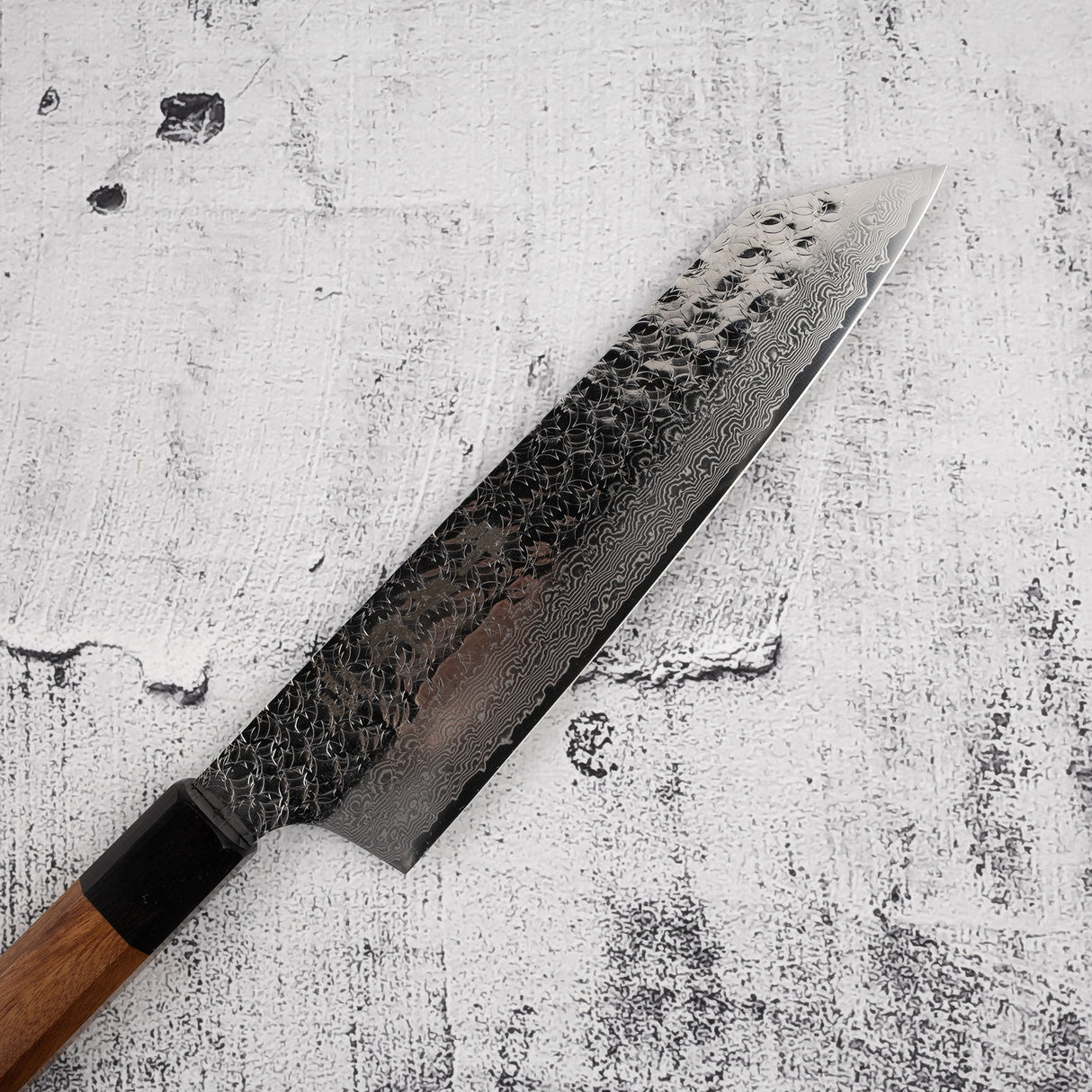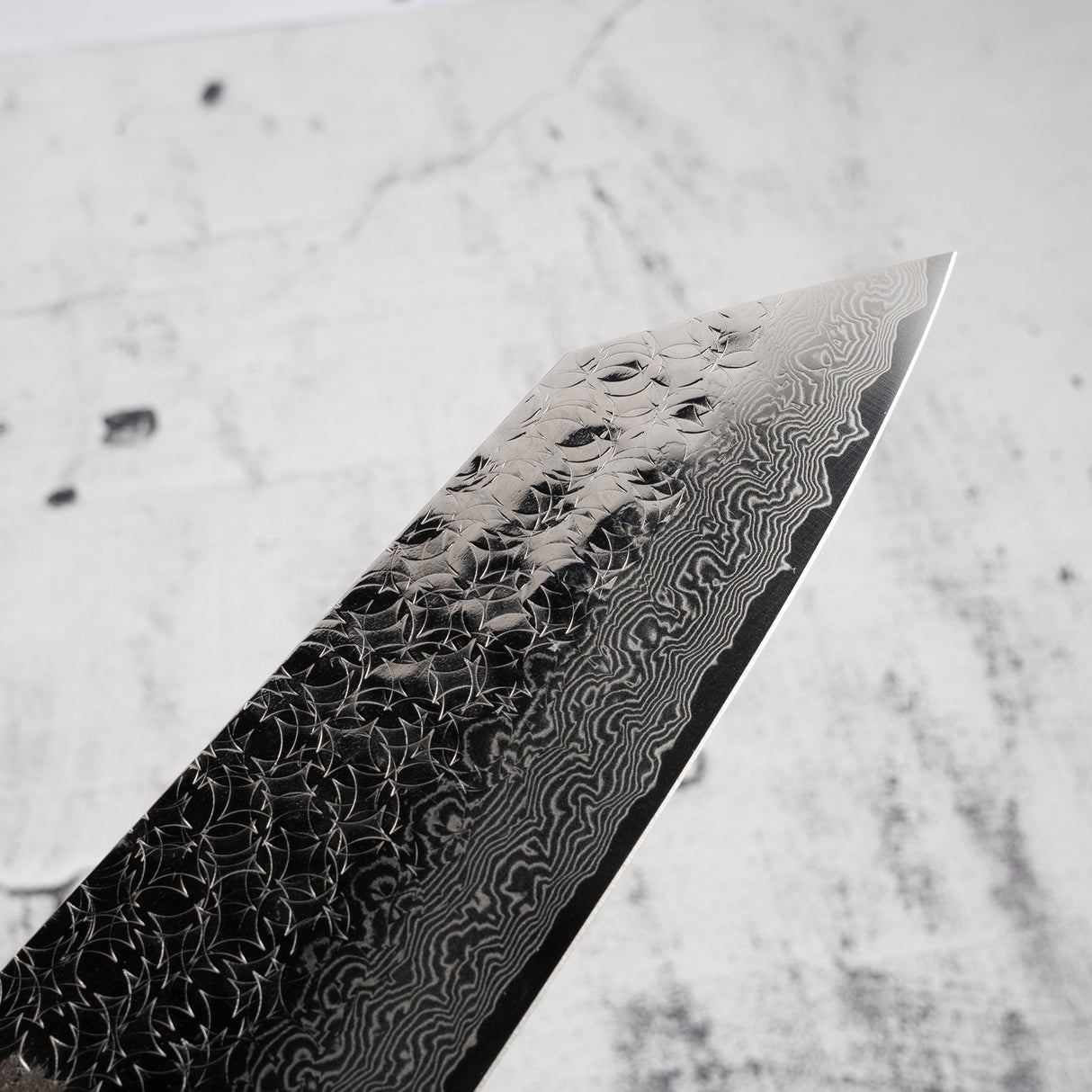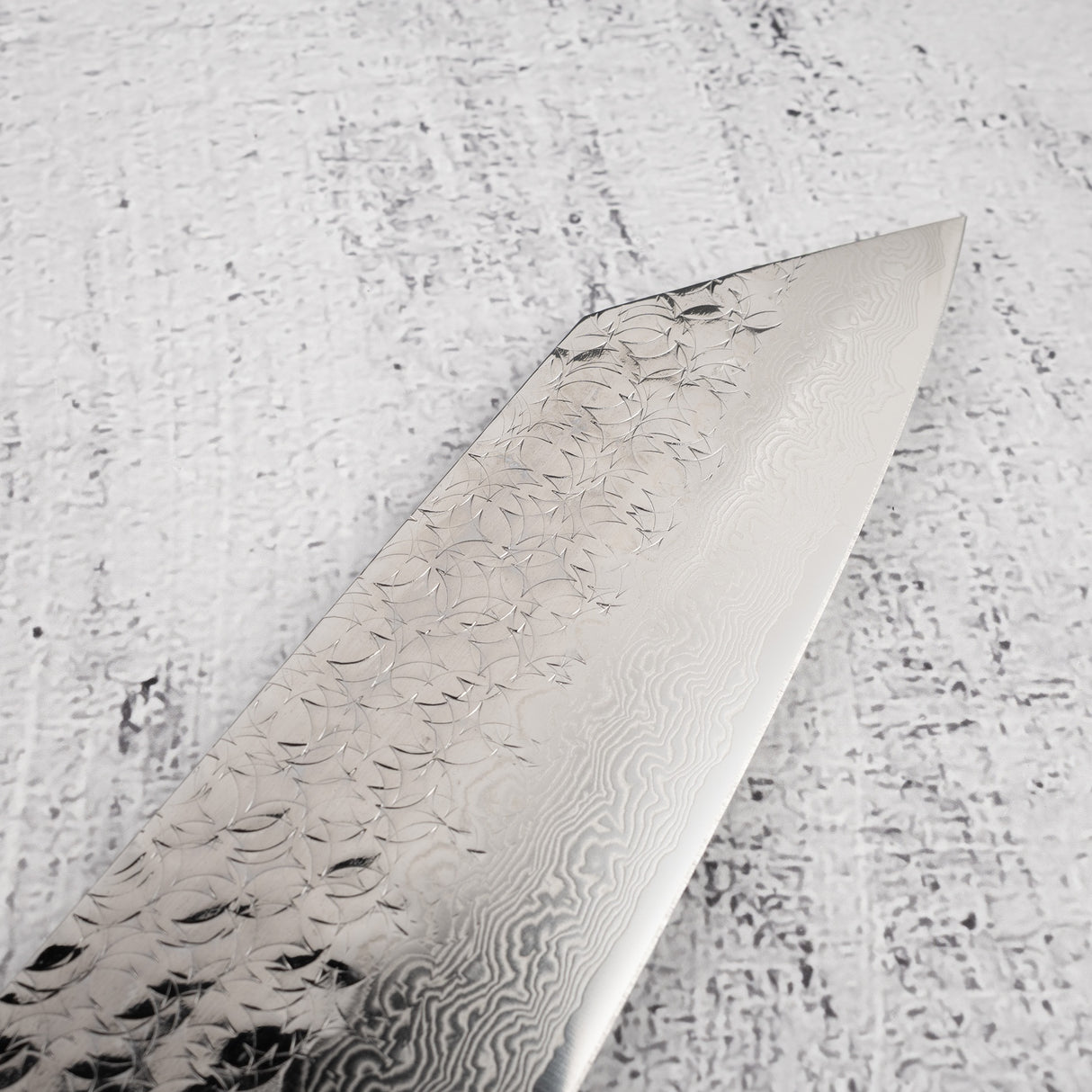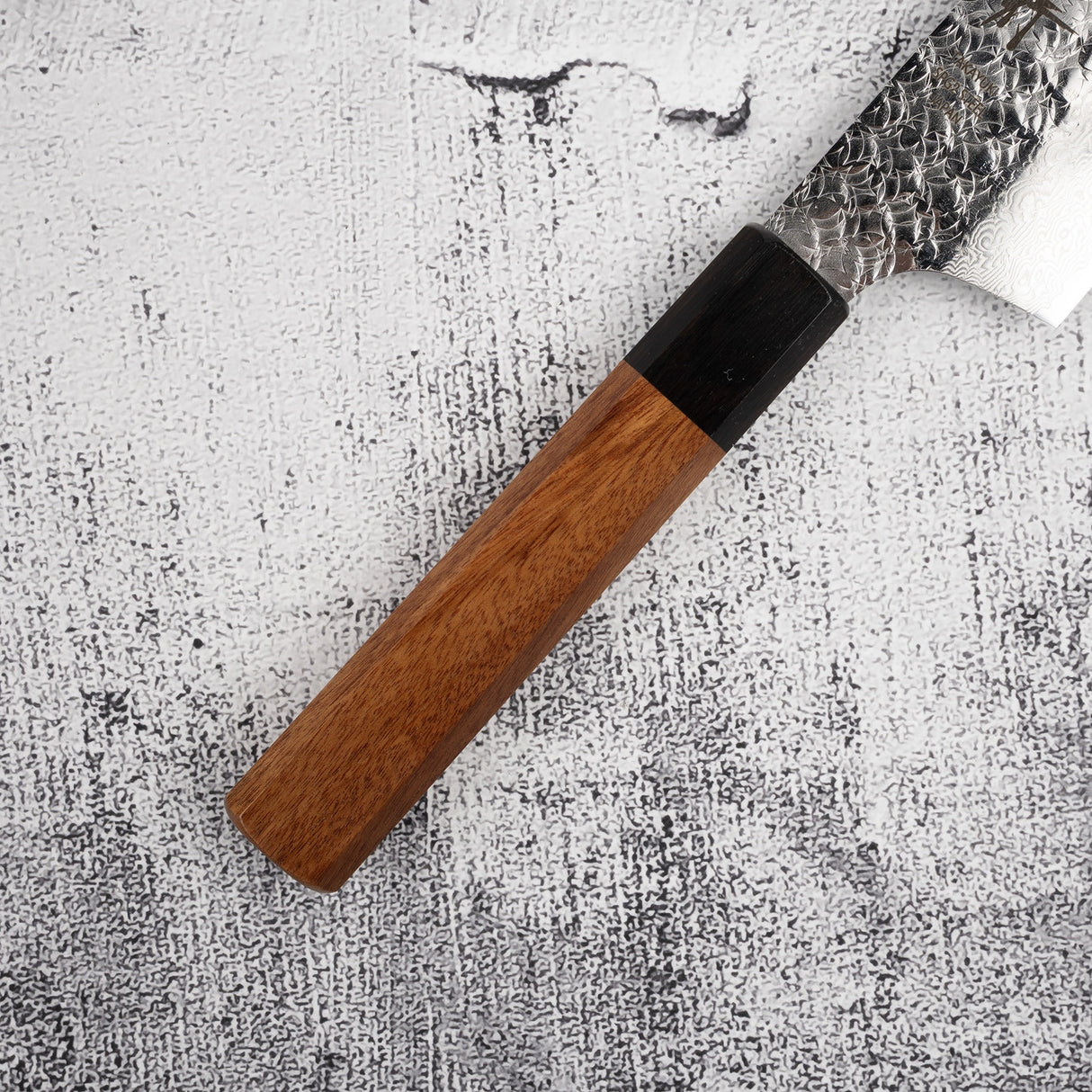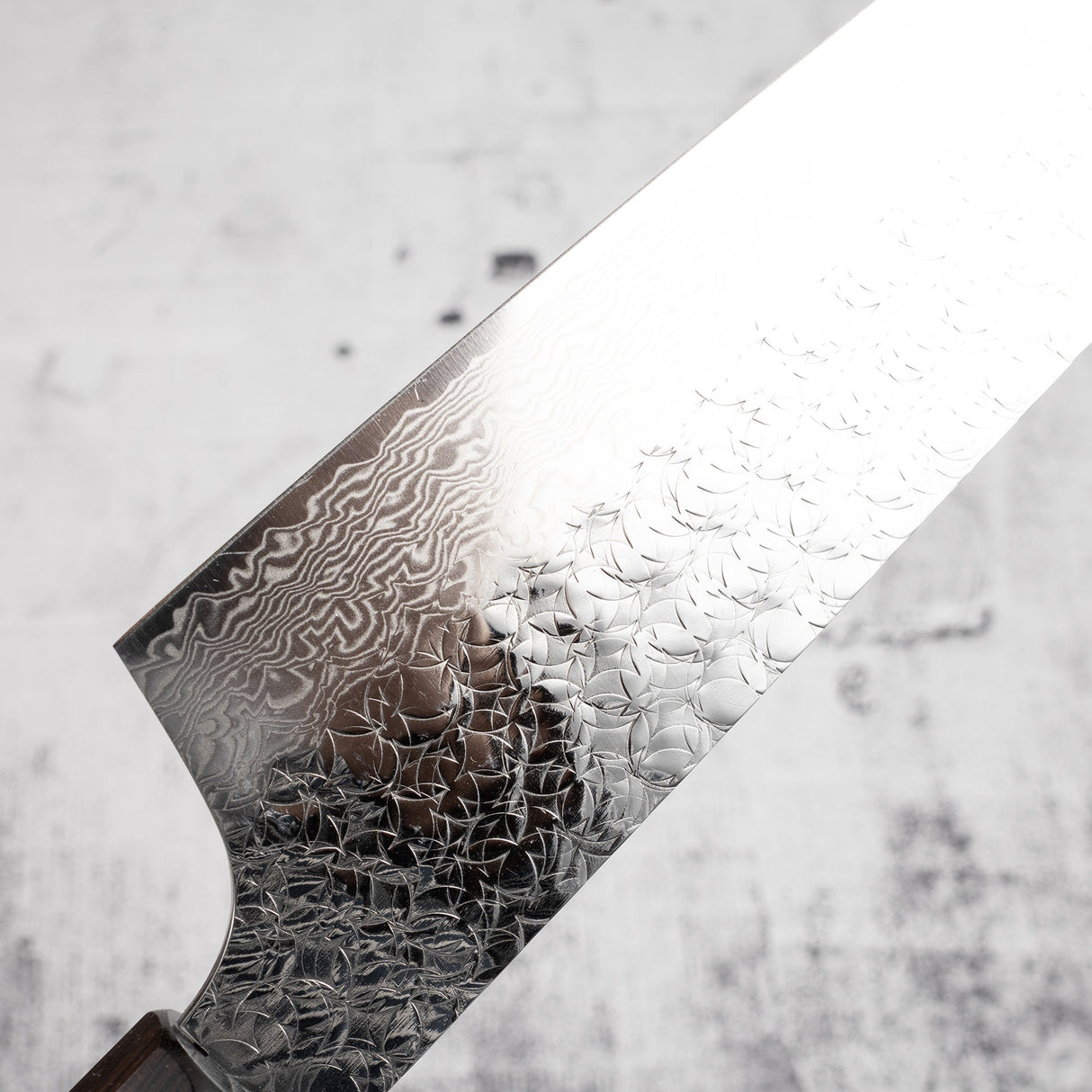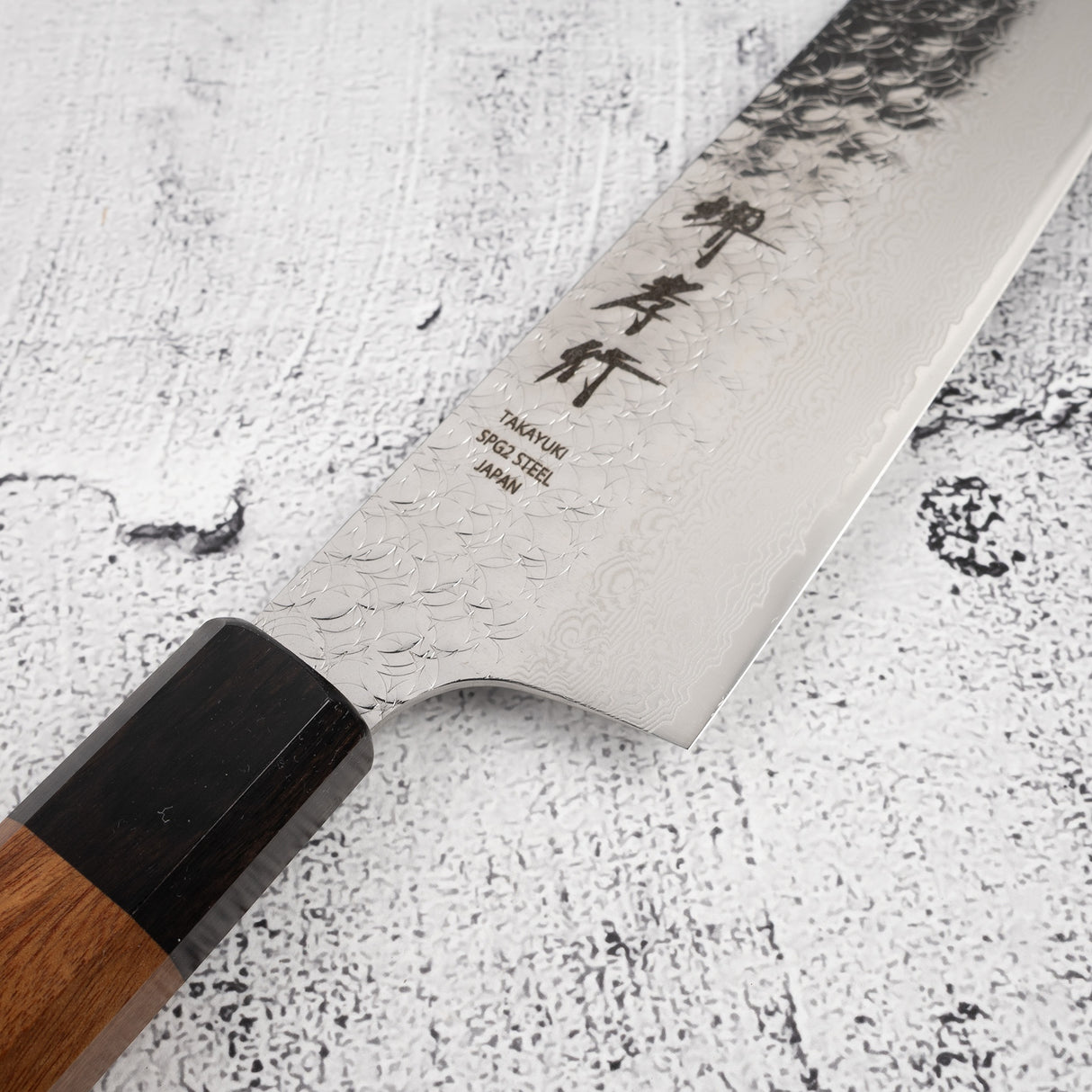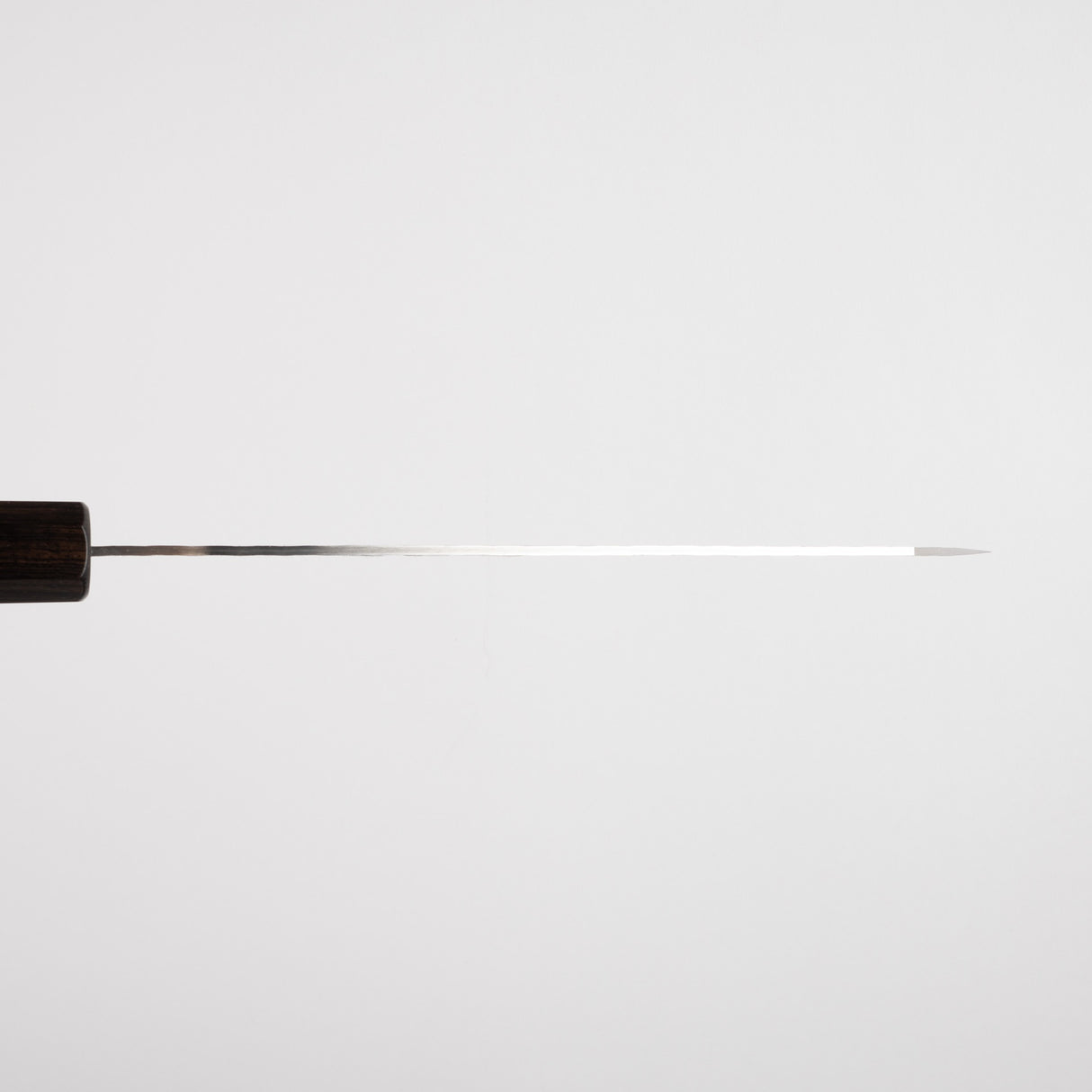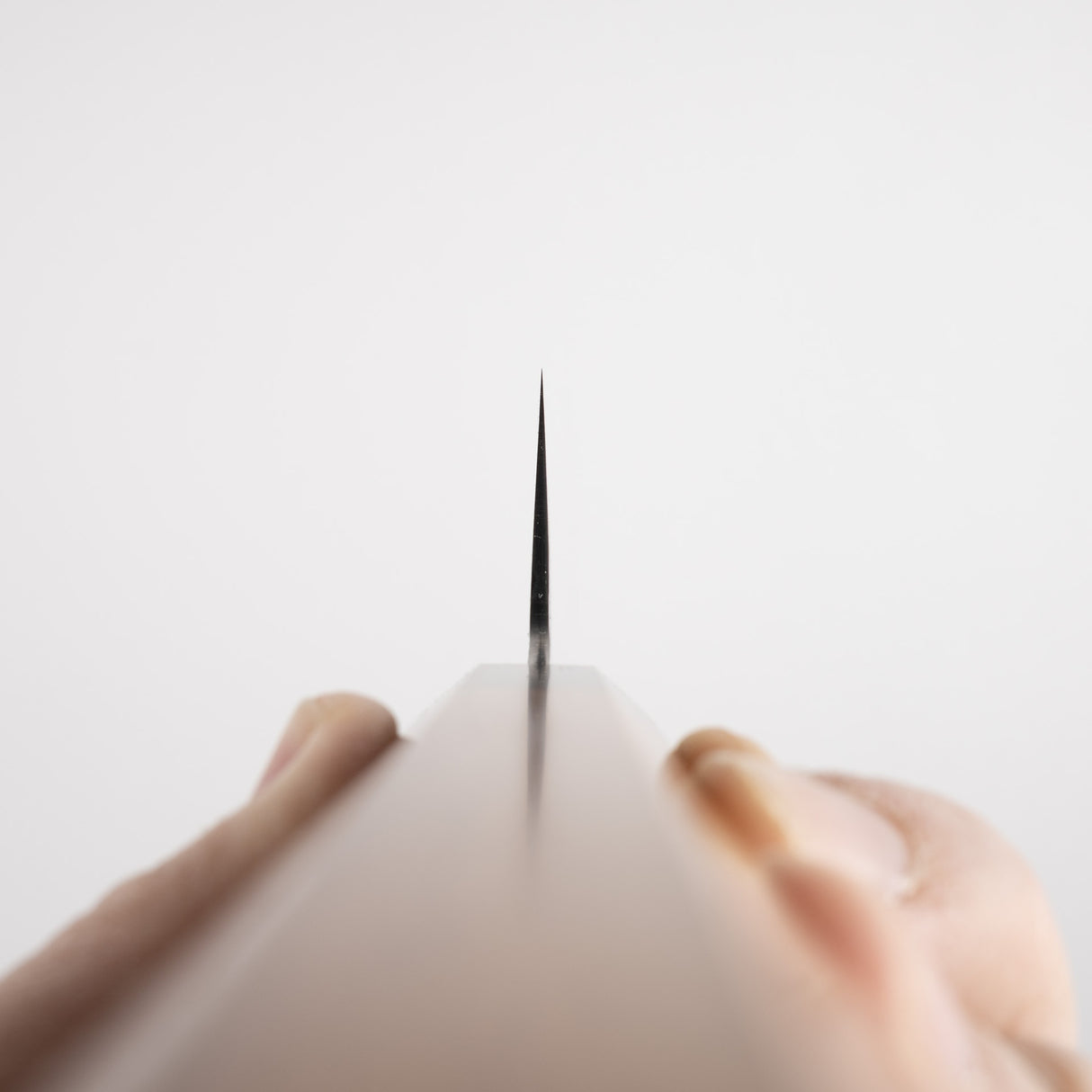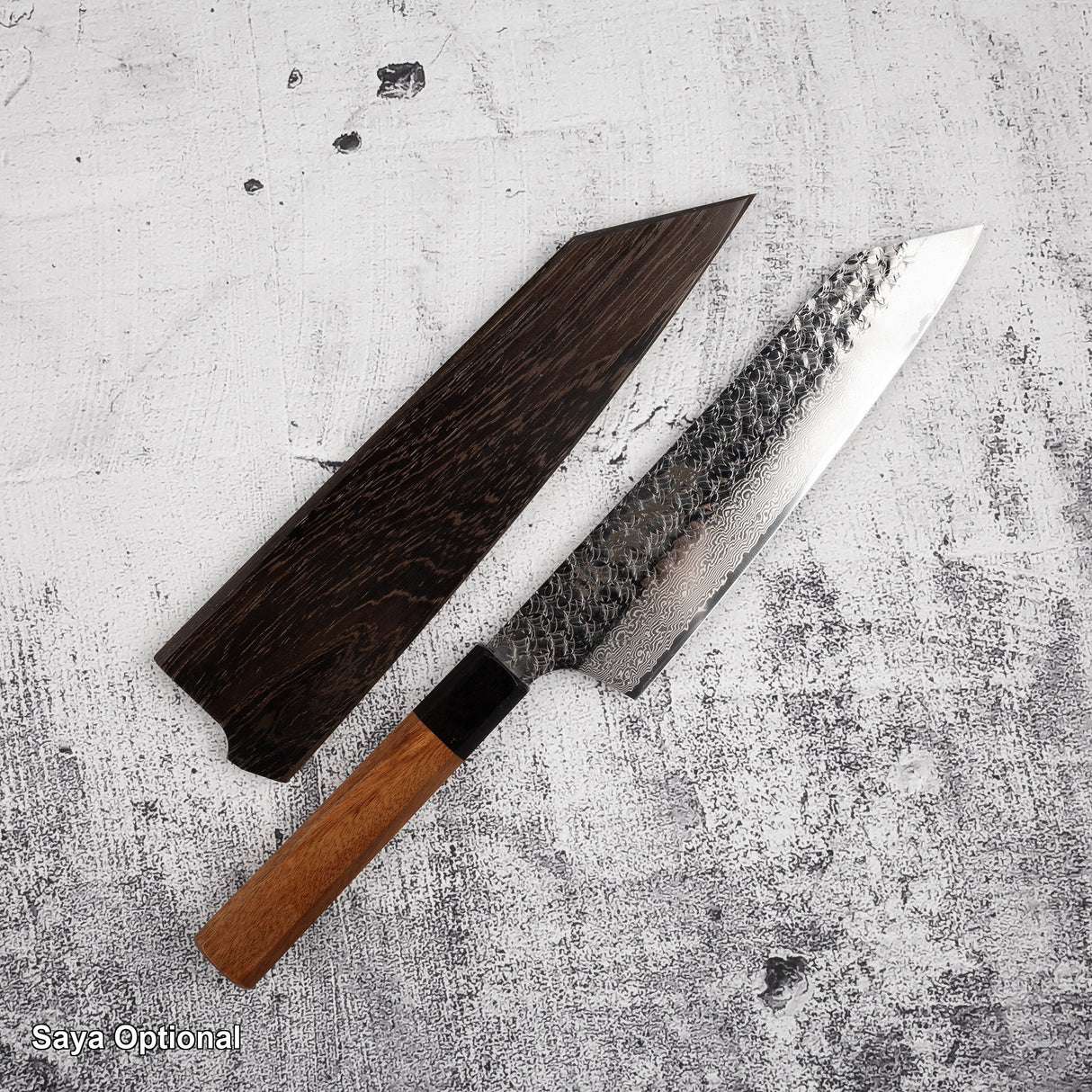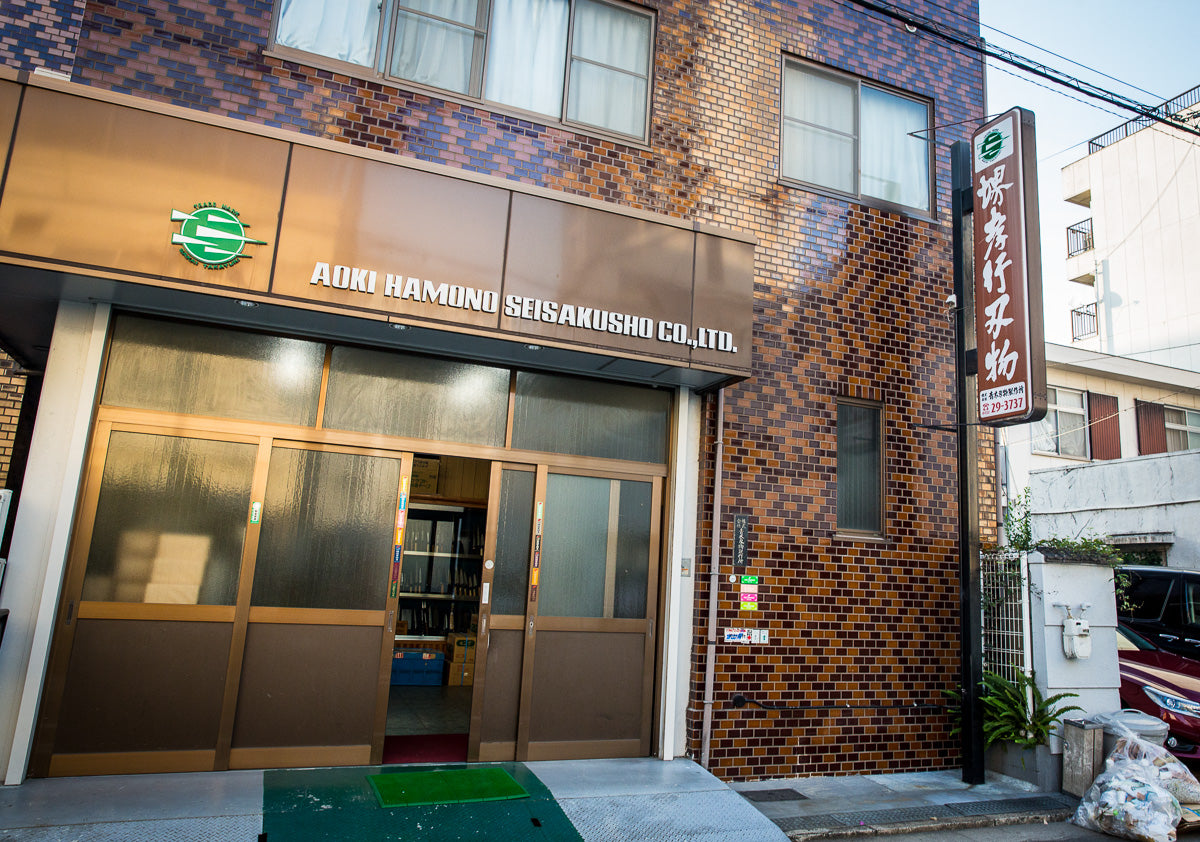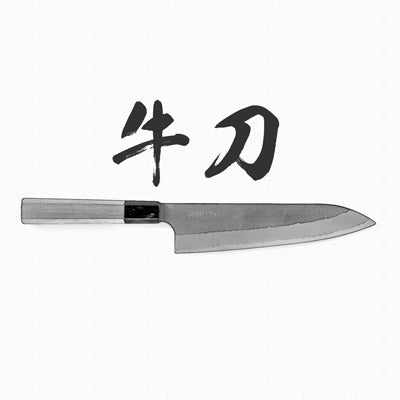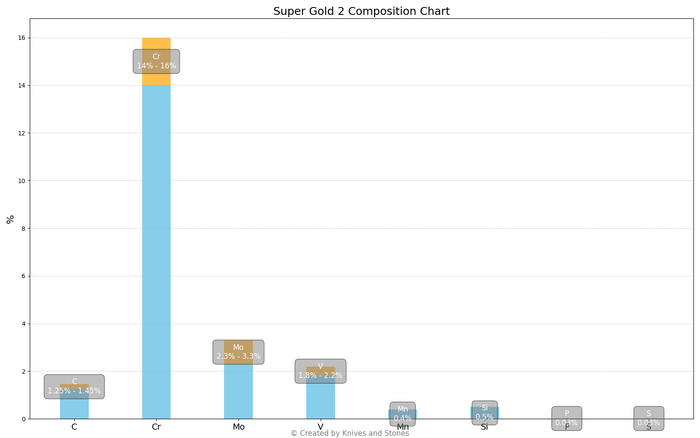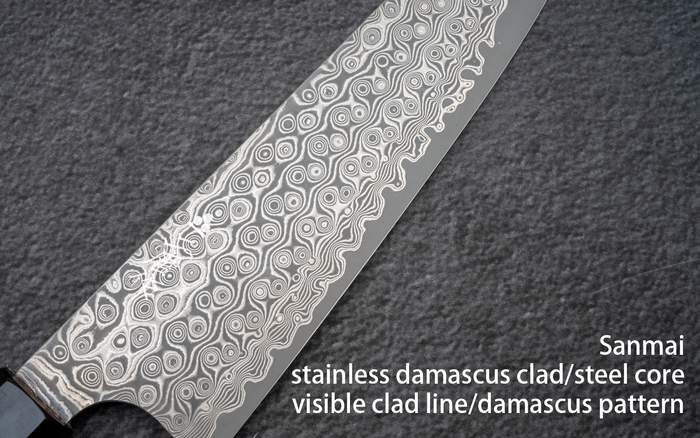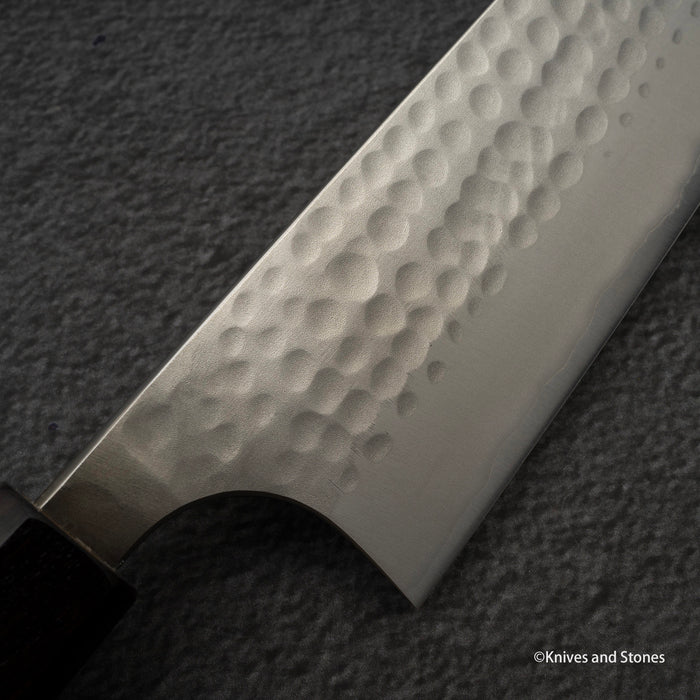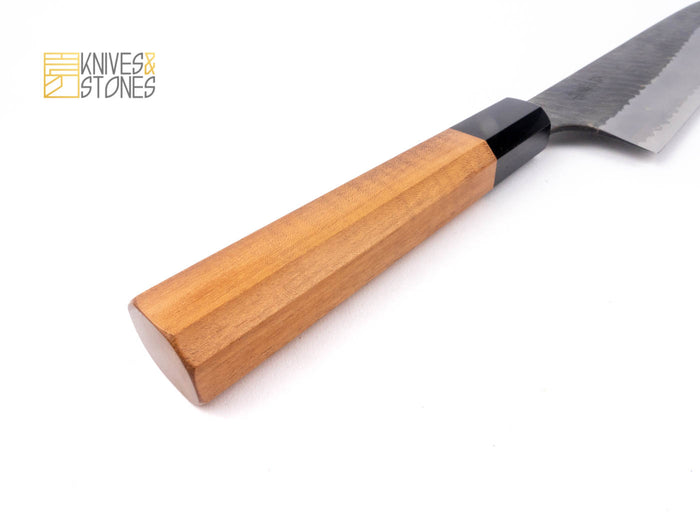Sakai Takayuki | SKU:
ST-SPG2TSU-KGY190
Sakai Takayuki SPG2 Kengata Gyuto 190mm
Sale price
$314.98
Regular price
$369.95
Unit price
/
Unavailable
Sakai Takayuki SPG2 Kengata Gyuto 190mm is backordered and will ship as soon as it is back in stock.
Couldn't load pickup availability
Detailed Specifications
| Line | Takayuki SPG2 Damascus WA |
| Profile | Gyuto / Chefs Knife |
| Bevel Type | Double Bevel |
| Weight | 198 g | 7.0 oz |
| Edge Length | 203 mm | 7 63/64″ |
| Heel Height | 50 mm | 1 31/32″ |
| Width @ Spine | 2.3 mm | 3/32″ |
| Width @ Mid | 2.1 mm | 5/64″ |
| Width @ 1cm from Tip | 1.0 mm | 3/64″ |
| Steel | SG2 / R2 | Powdered | Stainless |
| Blade Construction | Sanmai - Stainless Damascus Clad |
| Hardness (HRC) | 62 - 64 |
| Surface Finish | Tsuchime |
| Handle | Octagonal Teak Black Ferrule |
| Region | Sakai |
| Best for |
|

| Pros | Cons |
|
|
|
Care Instruction
- Don't cut hard things! Japanese knives are brittle so bone hacking is a NO NO!
- Wash with neutral detergent after use, and wipe dry;
- Please don't wash knife with dishwasher, it will damage the wood handle;
- Be careful not to leave the knife close to a heat source for a long time;
- It is a lot more dangerous to cut with a blunt knife than a sharp knife!
- It is best to sharpen a Japanese knife regularly on a waterstone.



